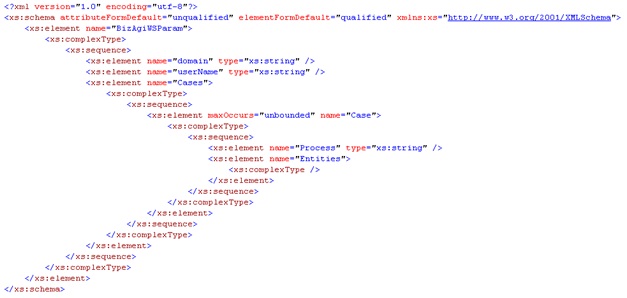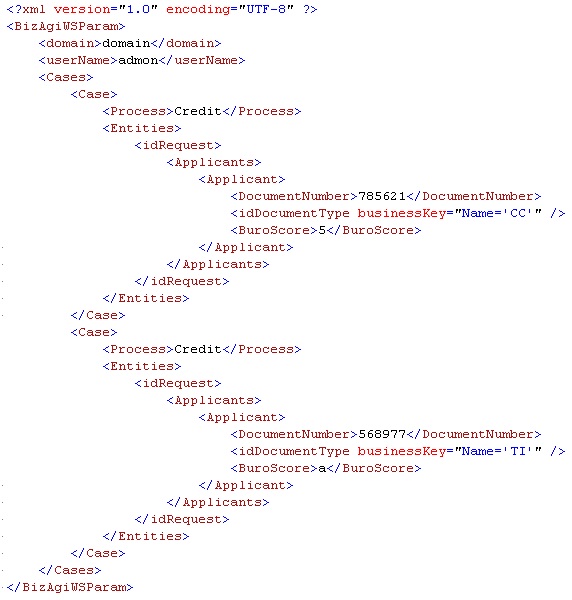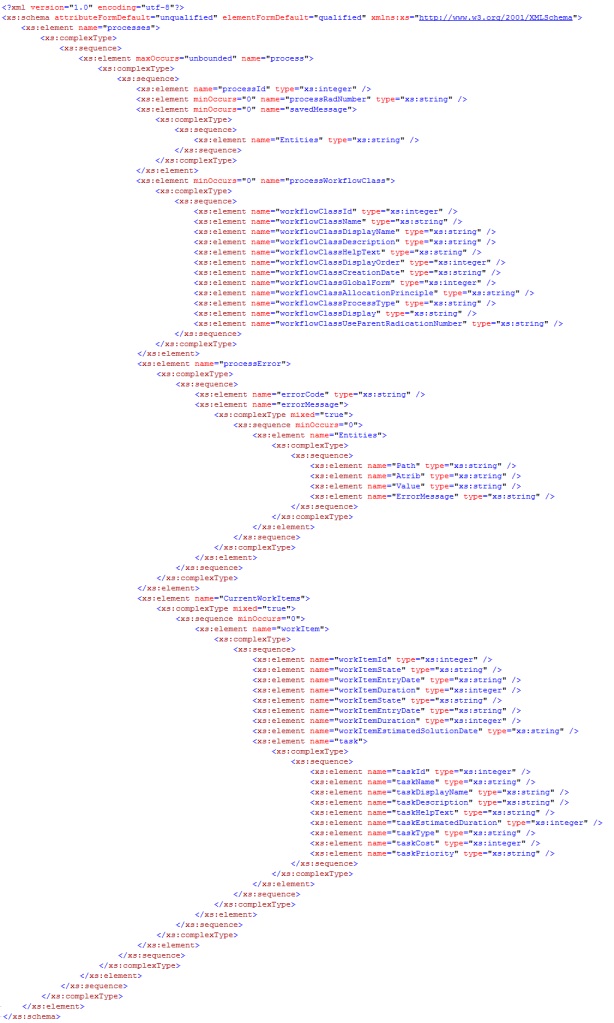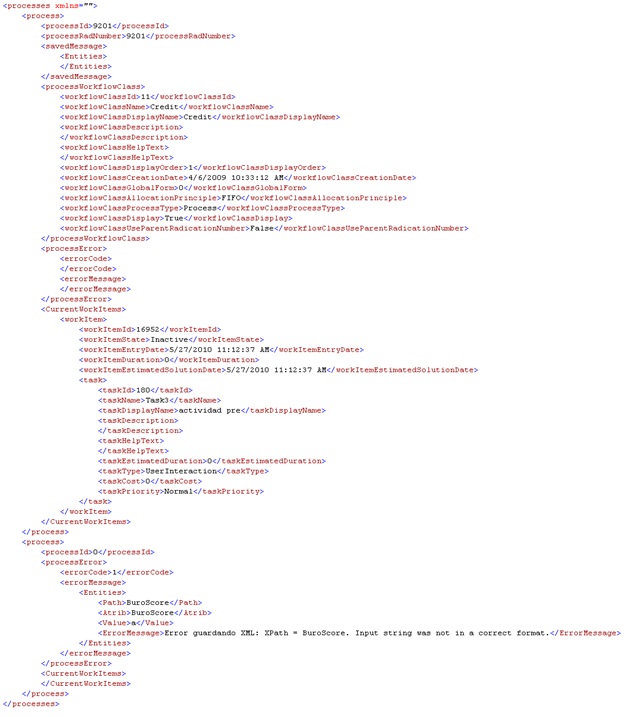CreateCases
From Business Process Management, BPM and Workflow Automation Wiki | BizAgi BPMS
<keywords content="keywords"> createCases, createcases, createCasesAsString, createcasesasstring, create Cases, create cases, SOA Layer, soa layer, WorkflowEngineSOA, workflowenginesoa, Workflow Engine SOA, workflow engine soa, createcase </keywords>
Contents |
createCases
Method from the WorkflowEngineSOA web service, used to create cases from external applications. This document also applies to the createCasesAsString method.
Description
With this method it is possible to create one or more cases at the same time. It is also possible to set information for the new case (or cases). The only difference between createCases and createCasesAsString is that the first one receives and returns an XML in XmlDocument format while the second one receives and returns the same XML's but in string format.
Input Data
The expected XML must comply with this XSD schema (copy it from here):
Parameter 1 (XmlDocument or String Type)
BizAgiWSParam: Root node.
domain: Contains the domain name of the Bizagi user, which will be registered as the one who created the case.
userName: Contains the name (used in Bizagi) of the user, which will be registered as the one who created the case.
cases: This element is included to enclose several case elements depending on the number of cases being created.
case: Here, the information of the case to be created, is included.
Process: In this element, write the name (not display name) of the process.
Entities: Include here the information that will be set in the data model for the newly created case.
Example
With the following XML two cases of the "Credit" process will be created. However, for the second process an error was included on purpose; the letter "a" was set as a value for the "BuroScore" element. This is an error because in Bizagi, the "BuroScore" attribute was created as an integer, this means that trying to save a letter in this attribute will result in an error, thus, the case cannot be created.
Output Data
The returned XML must comply with this XSD schema (copy it from here):
The response includes basic information of the case (and process) just created. Here is the description of each data contained in the returned XML.
processes: Root node.
process: This element is included for each case that is to be created.
processId: Identification number of the case (idCase).
processRadNumber: Alphanumeric value corresponding to the creation number of the case.
savedMessage: Reserved for future use.
Entities: Reserved for future use.
processWorkflowClass: The information in this node is all about the process (process metadata) not about the particular case.
workflowClassId: Identification number (or key) of the process.
workflowClassName: Name of the process.
workflowClassDisplayName: Display name of the process.
workflowClassDescription: Process description.
workflowClassHelpText: Process help text.
workflowClassHelpURL: Help URL for the process.
workflowClassDisplayOrder: The order in which the process will be viewed in the web application.
workflowClassCreationDate: Creation date of the process.
workflowClassGlobalForm: Identification number of the process’s global form (zero if it is not configured).
workflowClassAllocationPrinciple: Reserved for future use.
workflowClassProcessType: Process type.
workflowClassDisplay: Indicates whether the process is visible or not.
workflowClassUseParentRadicationNumber: Indicates if a case of this process uses its own creation number or the same number as the parent process (if it is a subprocess).
workflowClassSupportScopes: Indicates if the process supports Bizagi "scopes"; which is an efficient method of data persistence.
processError: If the process of cancelling a case is not successful, this element will contain information of the error.
errorCode: Code of the error that occurred, otherwise it will be empty.
errorMessage: Message of the error that occurred, otherwise it will be empty.
Path: XPath of the element, in the request XML, generating the error. Visible when the error is caused by wrong data.
Attrib: Is the name of the attribute in Bizagi where the saved operation was attempted. Visible when the error is caused by wrong data.
Value: Is the value which caused the error. Visible when the error is caused by wrong data.
ErrorMessage: Message explaining why the error occurred. Visible when the error is caused by wrong data.
CurrentWorkItems: The set of activities available for the case.
workItem: This is a specific activity (an instance of a task) of the process that is active for the case.
workItemId: Identification number or key of the activity.
workItemState: State in which the activity is.
workItemEntryDate: Date and time when the case reached this activity.
workItemDuration: Is the estimated duration, in minutes, for this activity.
workItemEstimatedSolutionDate: Is the case’s estimated solution date.
task: Contains information about task corresponding to the activity.
taskId: Identification number or key of the task.
taskName: Name of the task.
taskDisplayName: Display name of the task.
taskDescription: Task’s descriptive text.
taskHelpText: Task’s help text.
taskEstimatedDuration: Is the estimated duration, in minutes, for the task.
taskType: Type of task.
taskCost: The estimated cost of the task. This value, like the estimated dates, is configured and determined by the designer of the process.
taskPriority: Fulfillment priority of the task.
Example
Here is the XML in response to the one sent as an example:
There are two nodes "process", the first one has detailed information of the process for which the case was created. While the second node, since the case could not be created, just includes the error message and the attrib and value that caused the error in the node called "processError".
How to Create a Case Using SOA
Go to SOA Layer <comments />




